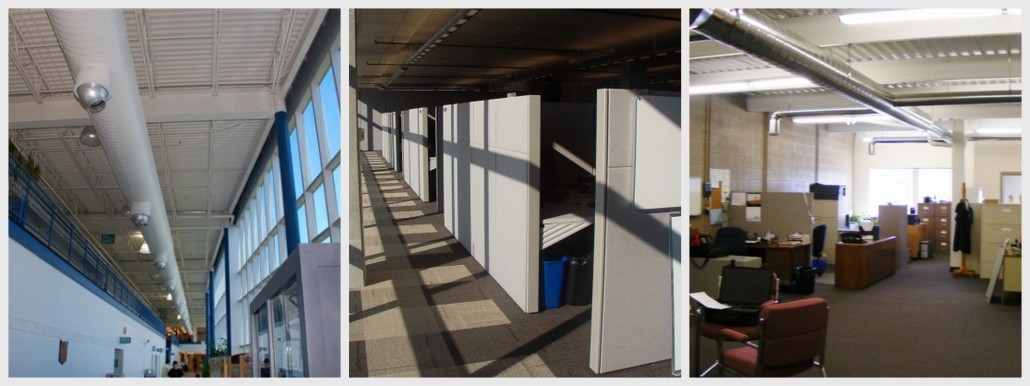When there are complaints about air quality in a building such as a school, office, residence, etc. often there are no obvious air contaminants. This problem has also been described as sick building syndrome or building-related illness. If air supply is insufficient then air contaminants may accumulate at threshold levels that are not noticable, but may be influencing the comfort of occupants or their perceptions about the quality of the indoor air. Where ventilation is inadequate to meet the level of demand for fresh air, individuals may report “stale”, odours, or they may experience discomfort from headaches, nausea, and lethargy along with other non-specific feelings of malaise.
IAQ screening procedures are conducted to identify potentially problematic areas within the indoor enviroment. Often carbon dioxide monitoring is performed as an indicator of whether the mechanical ventilation system is performing adequately to control the buildup of indoor air contaminants. This is key to resolving many IAQ issues. Other monitoring of ventilation is conducted as part of the screening to ensure that comfort needs are satisfied.
Symptoms or complaints may require a systematic IAQ investigation. Dust on furnishings, stains on ceilings, discoloration of wall paint, pests, etc. sometimes lead to these questions. Each situation requires a different solution and approach. A ventilation review may be warranted. Testing for specific air contaminants in the building such as formaldehyde, volatile organic compounds (VOCs), styrene…. or for mold spores may be the next step. OSHTECH has a wide range of IAQ testing equipment to assess air quality and a fully accredited laboratory for analyzing air samples. We can provide ventilation engineering reviews and technical support. Contact us if you need assistance in dealing with these issues.

